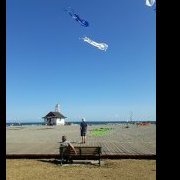Grey Wire: To White Or Black?
-
Recently Browsing 0 members
- No registered users viewing this page.
-
Topics
-
-
Popular Contributors
-
-
Latest posts...
-
171
Will the Epstein saga tear MAGA apart?
At least he's not totally blind to vile behavior as some are. -
188
Report Swede, Aussie Found Dead Hours Apart in Same Pattaya Condo
I just have to address your reply, you got the wrong man here. I got my life and things together, do not blaim everyone else for my mistakes, do not blaim my exes for the trouble I had, and do not have kids with random women. So? What did you say again? You who are so educated should also understand this Blaming Others as a Symptom: People with NPD often project their own negative traits and behaviors onto others, refusing to take responsibility for their actions. This blaming behavior can stem from a fragile ego and a need to maintain a positive self-image. -
188
Report Swede, Aussie Found Dead Hours Apart in Same Pattaya Condo
Huh? You insult everyone that disagrees with you. I posted 4 links. You can't even read the latest science. Your advice is useless. -
60
USA CBS Drops Bombshell: Stephen Colbert's 'Late Show' to End in 2026
Letterman as the best. A giant among late show hosts. Colbert is a wet tissue next to him. -
-
1
What Happens if Ghislaine Maxwell Testifies Before Congress?
She will be silenced, never be allowed to testify
-
-
Popular in The Pub





.thumb.jpeg.d2d19a66404642fd9ff62d6262fd153e.jpeg)









Recommended Posts